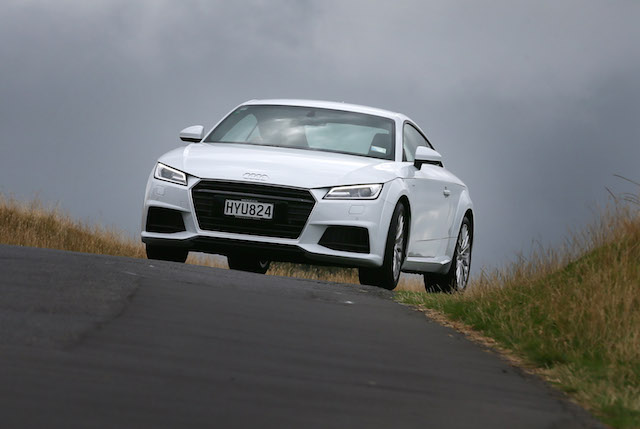
Audi’s global marketing slogan ‘Vorsprung durch Technik’ is still very much the carmaker’s mission statement, although Audi NZ general manager Dean Sheed doesn’t run into it that often in this country.
“It’s very much what Audi is all about, the direction Audi takes with everything it does, but it doesn’t actually resonate with New Zealanders to the point where I hear someone saying it every day,” he said.
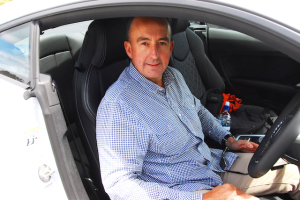
Sheed doesn’t expect the indifference to change as he prepares to launch seven new or updated models in 2015. First up this week is the TT coupe and later the A3 e-tron (plug-in) hatchback, A6 and A7 facelifts, Q3 SUV, A1 hatchback, Q7 SUV, and RS3 Sportback.
He is looking at overall sales of perhaps 2200 units in 2015, up 150 – three cars a week or so – on last year’s 2075. “Audi’s growth in New Zealand last year was 15 per cent, but we are expecting slightly less growth in 2015 than in previous years, perhaps 10 per cent,” he said.
The country’s go-ahead areas continue to be Auckland, Waikato and Canterbury. Waikato hub Hamilton has swelled by up to 30 per cent, one reason why Audi is building a multi-million dollar dealership in the city’s east, just over the bridge from the southern end of the main drag. “We expect it to be open for business around August/September,” said Sheed.
By then five of the seven new-look Audis will have landed, as usual carrying the ‘Advancement through technology’ catchline, 44 years old this year. It has been used by Audi since 1971, when it described technical innovations in its line-up of NSU models.
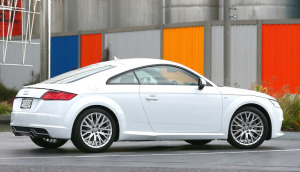
It was coined by engineer Ferdinand Piech, who often used the phrase before and after he graduated from a Swiss university in 1962 and went to work for Porsche. Piech joined Audi in 1972 and over the next eight years headed development of the famous Audi Quattro coupe.
Piech of course is now chairman of the supervisory board of Audi parent the Volkswagen Group. He signs off on everything the group does and did so on the first TT coupe in the late 1990s, on the bones of which the new VW Beetle was based.
The latest TT is the third-generation example. The first went on sale in New Zealand late in 1999; the second in 2006. Audi says it returned to the geometric styling lines of the original when it penned the new two-door, based as it is on the VW Group’s flexible MQB platform which underpins many other models.
Audi talks up the TT’s styling, its ‘powerful’ horizontal lines front and back and ‘sharp’ contours here and there. The TT’s face has a ‘determined’ look, it says. But how determined New Zealanders have been to buy it over the years is reflected in the modest sales figures.
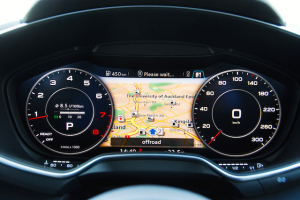
The car has been very much a niche model for Audi – it was only going to be. It sold 58 in its first full sales year, 2000. Its best year was in 2007 with 63 sales; its worst was the five sales in 2005, the year the first-generation model was on its way out.
For most TT buyers – 38.5 per cent, says the Audi pie chart – the lure over the past 15-16 years has been the way it looks. Others, almost 25 per cent, say they bought it on reputation alone.
But with a two-door such as the TT, its reputation might have more to do with its looks than the way it drives, for example. Therefore, Audi could perhaps claim that roughly 70 per cent of buyers fall in love with it at first sight. It’s that sort of car.
Like many of its buyers it’s watching its weight and trying to firm up as it gets older: the second TT was 90kg lighter than the first; the third model at 1230kg is 50kg lighter than the second but has a 23 per cent stronger bodyshell.
It also has much more standard equipment, including for the first time a fully digital instrument cluster that adjusts every which way and which Audi believes will prove more popular among buyers than a heads-up display, where information is projected hologram-like on to the windscreen

A brief drive of the new TT on roads in and around Auckland revealed what you would expect: it’s much better all-round than its predecessor. At 4180mm it’s almost the same length but the front and rear overhangs are shorter to suit the 37mm longer wheelbase. Height (1353mm) and width (1832mm) are the same as the outgoing car.
The front-drive TT rides on 18-inch alloys and offers a more accurate and settled ride/handling mix than before. Its 2.0-litre turbocharged four-cylinder engine is much more flexible, too, delivering 169kW of power and 370Nm of torque. The 370Nm is available between 1600-4300rpm and enables brisk progress utilising the six-speed automatic gearbox with manual-mode paddle shifts. Fuel use after about 200km of leisurely and hard driving showed 8.1 litres/100km, or 35mpg.
The four-paw TTS gets the same drivetrain, but the engine is tuned to deliver 228kW and 380Nm, its torque on hand between 1800-5700rpm. It will be quick off the mark, getting from 0-100km/h on its 19-inch alloys in a claimed 4.9 seconds, a second quicker than the front-drive TT. The TTS isn’t here yet.
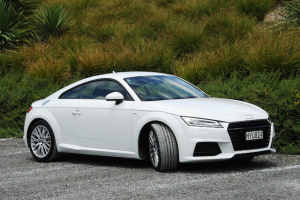
Audi describes the TT as a ‘2+2’ layout. Not even close! It’s more a two-seater with a decent boot when the dinky back seats are folded flat. There is perhaps just enough room in the rear for the Hobbit’s “Halflings.’ Perhaps.
The price too doesn’t leave much wriggle room. The TT comes in at $91,800, the TTS at $122,900. The soft-top roadster – when it gets here – will be $127,900. There are options here and there, like the $5100 rear spoiler that automatically raises to help downforce beyond 120km/h, or 20km/h over the NZ speed limit.
As always, the TT will sell on its looks. It’s a café car for the trendy parts of town. Its price takes it into territory where there are many alternatives, many of whom offer more of everything. One comes to mind: The 265kW/450Nm all-wheel-drive Mercedes-Benz A45 AMG at $95,400.
• ‘Vorsprung durch Technik’ didn’t become the Audi catchline in mainstream advertising until the early 1980s. British advertising doyen Sir John Hegarty spotted the line in 1982 on a visit to the Audi factory in Germany, two years after it had unveiled the ground-breaking Quattro coupe at the Geneva motor show.
He had just founded the agency Bartle Bogle Hegarty (BBH) and was looking for a catchline to sell Audis in Britain. Despite scepticism that a German phrase with such a bland English translation would work, Hegarty went with his gut feeling.
He saw it as a means of emphasising German quality and engineering integrity. The strapline that first appeared in Britain in 1983 is now one of the most famous and long-running in advertising. Audi in 2010 won a seven-year legal battle to take full control of the phrase as a trademark.
